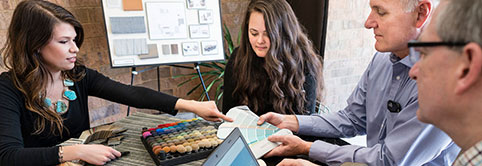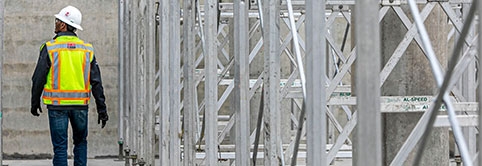Onboarding Lean Teams
Introduction to Onboarding Lean Teams
Once you’ve determined that you would like to begin implementing Lean practices into your next project, you need to consider your onboarding processes. All Lean projects need an effective and engaging onboarding process to get all team members aligned in how the project will be conducted.
When entering a new school, beginning a new job, or learning a new skill, an onboarding process occurs. Lean projects are no different in this way, and there are a number of benefits to implementing an onboarding process to your project.
One of the main goals of onboarding is getting every member of the team on the same page. For members of your team who are already adept at implementing Lean concepts, your onboarding may serve as a standard for how these Lean practices will be implemented for the project, what Conditions of Satisfaction the project will be anchored to, and what the culture of the project team will be.
For the many who are not experienced at implementing Lean methods, this will be an educational course demonstrating what these concepts are and how they will be implemented, in addition to the other pieces noted previously.
For everyone, this will be the first time working on this specific project with this specific team – making onboarding necessary for everyone. Without a proper onboarding process, people are likely to produce a high amount of waste without knowing it.
In order to achieve this, teams must be willing to engage in project stages that they may not otherwise – this means bringing the construction and trade teams into the room when design decisions are being made. In this new workflow, the “design phase” and “construction phase” often blur together as teams collaborate and make decisions to progress the project forward.
What is Onboarding Lean Teams?
“Onboarding” is the means of bringing everyone “on board” a new venture. Onboarding is a group training exercise that teaches members about the methods and language they will be using, the tools they will need, and the culture that the project team will expect to have.
Why is Onboarding Necessary in Lean?
Lean concepts represent a stark contrast from the way that construction projects are normally done. Because of this, members of a project will have a lot to learn and a lot to “unlearn” as it pertains to how a project should be conducted. Members of the project may be asked to take on roles they are not accustomed to, or to take charge on Lean concepts that they aren’t comfortable with from the start. A willingness to learn is a crucial characteristic for members of Lean teams to have, and onboarding is the first time when this is put to the test.
By level-setting by introducing all of this information at the beginning of a person’s involvement in the project rather than by teaching them on the fly, team members have the opportunity to make mistakes, ask questions, and problem solve with one another in a low-stakes environment where they have the room to grow.
Many Lean concepts revolve around the idea of planning ahead or forecasting potential problems down the line and using Lean tools to solve those problems. Concepts such as a Risk & Opportunity Register can only be implemented if the members taking part in that process have been properly onboarded. This is true of many Lean concepts, where being prepared is key.
By ensuring that team members are fully educated and prepared from the start of their involvement in a project, these members will have the opportunity to make a positive impact on the project right away.
Another reason that onboarding is important is that in traditional construction projects, the design team, construction team, and trades don’t normally work with one another. Part of the onboarding process involves teaching these groups how to work together and how their individual work will inform the work of the other teams.
This also gets team members into the habit of being more transparent with one another, which will pay off greatly down the line.
Elements of Lean Onboarding
It’s Active
Successful Lean onboarding often includes a combination of learning and doing. Team members may learn a concept then immediately break into exercises where they learn how to implement it. This is a helpful method when working with people in the built environment because they are active people by nature, and sitting and learning for hours or days on end might not be a productive endeavor.
Allow team members to put what they’ve learned into action and they may more easily see the value in implementing these changes into their workflow.
It’s Engaging
Engage team members by utilizing a variety of tools for learning. This includes presentations, open-ended discussions, videos, webinars, and hands-on activities. In the spirit of Continuous Improvement, try to determine which style of learning seems to work best for your group, and adjust accordingly.
Fostering as much collaboration as possible during the onboarding phase will allow team members to get used to working together.
It’s Involved
Initial onboarding should include everyone that will be involved in the project at the beginning, including owners, designers, constructors, and trade partners. Partners who will be involved only at the later stages of a project will be onboarded at that time.
The owner’s involvement specifically will send a positive message to other members of the project, many of whom are not used to working alongside an owner that is transparent and involved in the process.
A key piece of onboarding is providing various team members with the means to learn from and communicate with one another.
It’s Ongoing
Onboarding is an ongoing process, with new members and new teams being added to the project over the course of the project’s completion. As members get added to the team, they will need to be educated on the processes and culture of the project, which may have changed since the project began.
Onboarding will likely be mostly frontloaded, with a majority of the learning happening when the team is formed and as members are introduced – or as the project shifts from one phase to the next.
It’s Updated
Don’t let your onboarding processes grow stale – ensure that your onboarding is constantly being refreshed and revisited so that it’s as up-to-date as possible.
As new members join the project and undergo the onboarding process, the objectives of the project may have changed. Make sure the onboarding reflects those changes so new team members are caught up and ready to contribute once they complete onboarding.
Lean Assessments
How strong is your Lean knowledge? Take a Lean assessment to determine your current state so you have a baseline for improvement. Lean assessments are available for individuals, teams, and organizations alike. Whether you’re new to Lean or are an experienced Lean practitioner, Lean assessments are a great way to get started at LCI!
TAKE ASSESSMENTMore Lean Topics
From 5s to IPD, explore popular Lean design and construction topics below.




